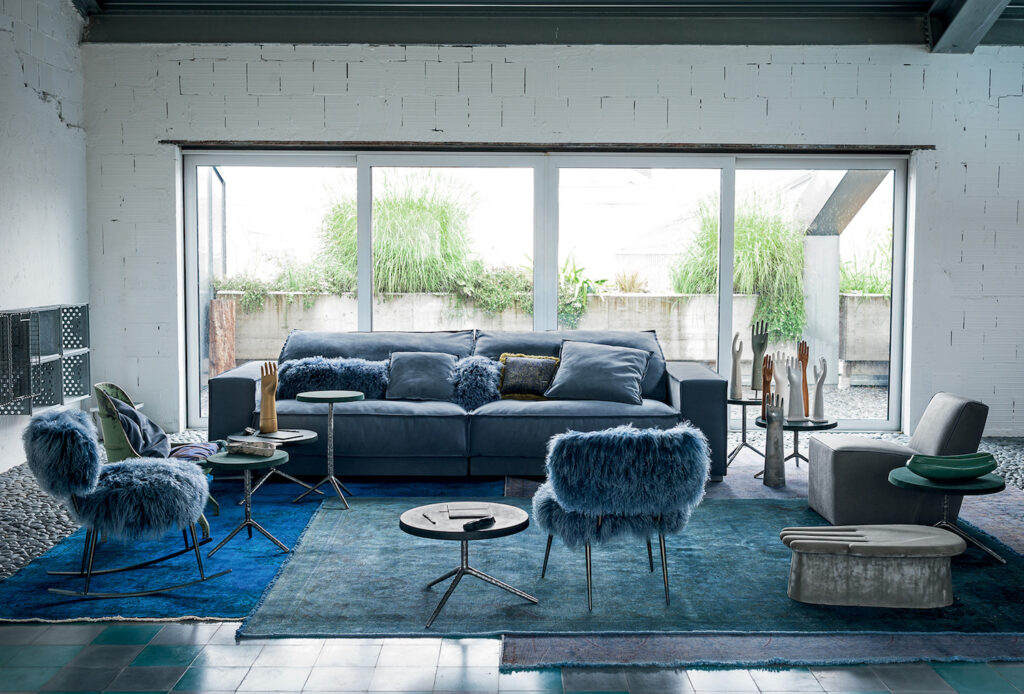Discover our e-shop and access a digital catalogue of over 40.000 design products.
Go to shop27 December 2022
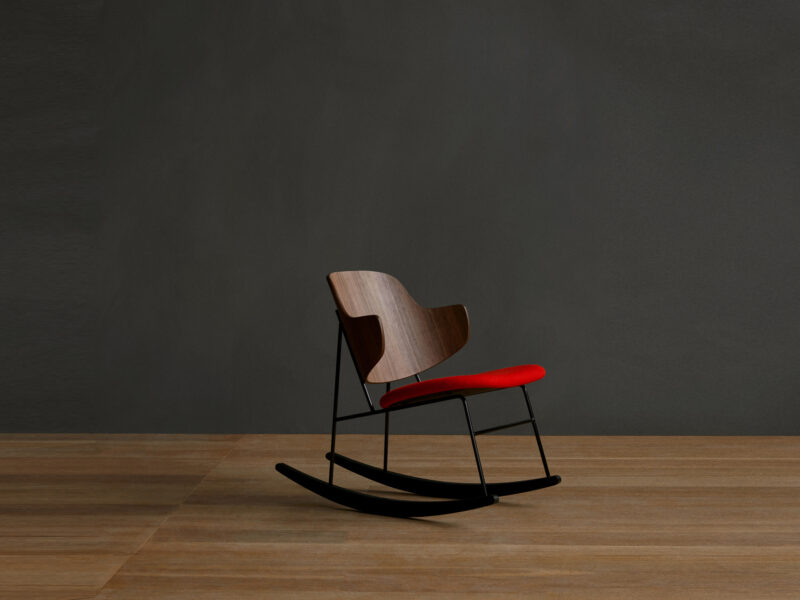
A classic of domestic comfort reinterpreted in a creative and contemporary key
Rocking chairs and armchairs have an ancient and reassuring charm. They are an excuse to relax, ease tensions and indulge in a few moments away from commitments and responsibilities. Indulging in that movement evokes childhood, giving comfort to the mind and body. They are a classic yet today, thanks to the reading offered by contemporary design, they take on an even more interesting design value because they are enriched with unexpected formal interpretations, combinations of materials that stand out and thick decorative details. Often, they appear as rocking versions of traditional seats and in this case they invite to mix and match to create dynamic conversation corners that stimulate curiosity. Here are some examples, from classic to contemporary, with creative peaks for the most eclectic tastes.
Schaukelstuhl by Gebrüder Thonet for Wiener GTV Design
In a review of the most interesting rocking chairs, perhaps the most familiar and reference model cannot be missing, designed at the end of the 19th century by the Thonet brothers and now produced by Wiener GTV Design. The structure is in steam-bent solid beech, a distinctive element of the production of this company since its inception, as is the use of Vienna straw for the seat and backrest.

Penguin by Ib Kofod-Larsen for Menu
The tradition of the Danish manufacture is one of the keys to the success of this iconic seat (on the cover) designed in 1953 by the Danish designer Kofod Larsen. The style is a mix of organic lines and modernist inspiration whose formal rigor is tempered by the rocking base which introduces an informal hint of domestic warmth. The backrest is like an embrace and the seat is padded for greater comfort.

Comback by Patricia Urquiola for Kartell
The seven-prong backrest is a modern reinterpretation of the classic Windsor chair, an English model of great success in the 1700s. The stylized lines, the colors and the plastic material of the structure, consistent with the typical Kartell production, make it agile and up-to-date, ironic and familiar. The rocking base, in wood, recalls the charm of the old chairs.

The Plastic Chair collection designed in the 1950s by Charles and Ray Eames is a 20th century classic: starting from the same seat and modifying the base, the designer couple created different types of chairs. Without forgetting a rocking version characterized by a great formal modernity and by the curved wooden base which makes the whole informal and invites you to relax.
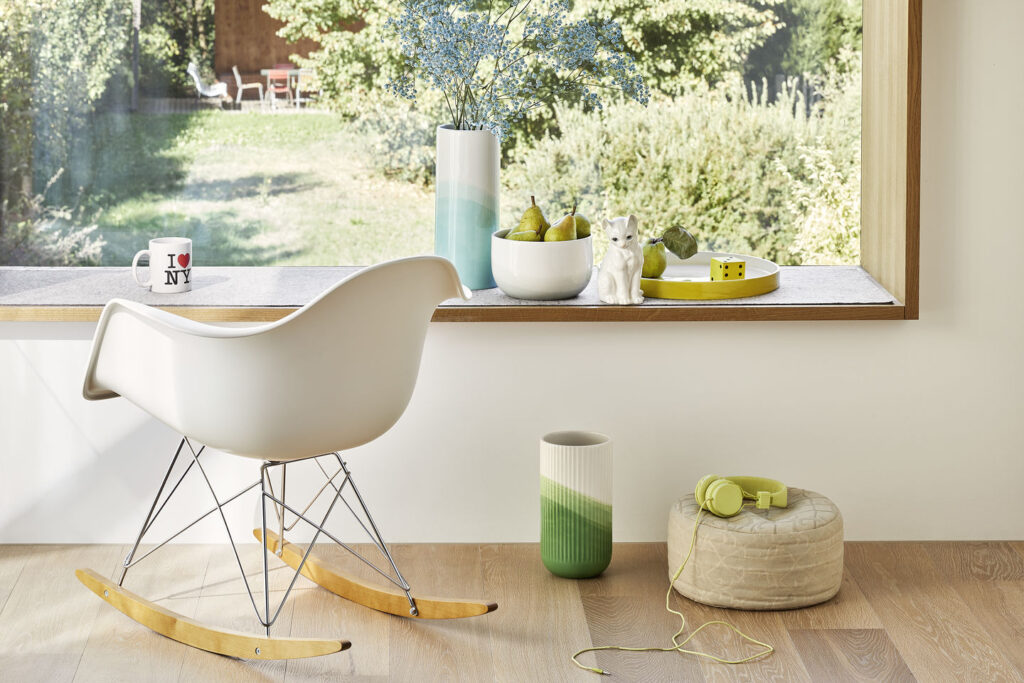
Euvira by Jader Almeida for ClassiCon
Euvira is an armchair with generous proportions inspired by the relaxed and slow mood of the Brazilian beach of Ipanema. And above all to the design of the Brazilian masters of the 50s and 60s to which he refers and with which Jader Almeida made his debut. The comfort of a real rocking chair is made visually light by the stylistic choices that favor essential and slender lines.
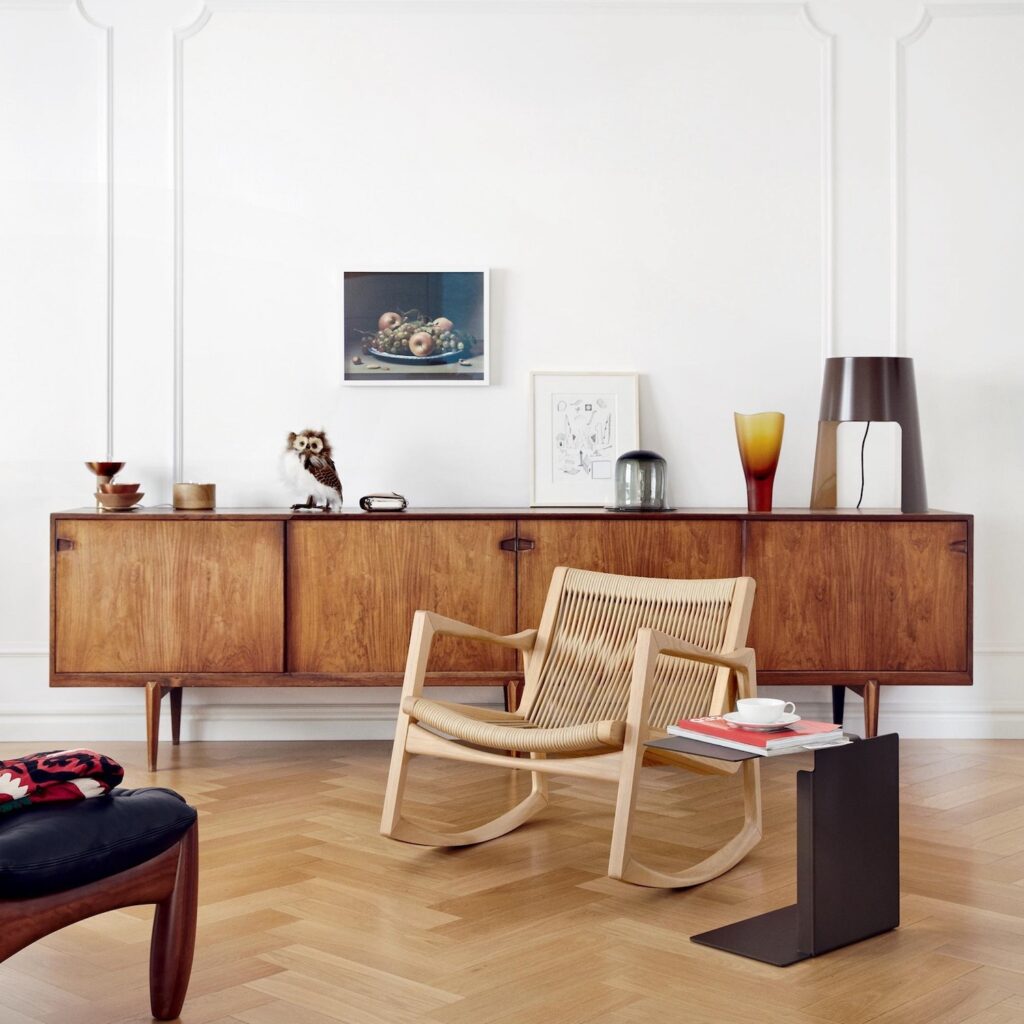
Gray by Paola Navone for Gervasoni
The appearance of this rocking chair evokes classic Scandinavian design and, moreover, in the Nordic countries, indulging in a few moments of domestic relaxation, in simplicity, identifies a lifestyle that is increasingly appreciated also in the rest of the world. The structure is in solid walnut or oak and Paola Navone’s trait can be recognized in the generous proportions and elegant but informal character.

Piña by Jaime Hayón for Magis
Jaime Hayòn allows himself with this project, the taste of giving a completely new interpretation to the genre. Piña, in fact, has a seat with a backrest in steel rod mesh, made comfortable by thin cushions. The rocking base is made of wood.
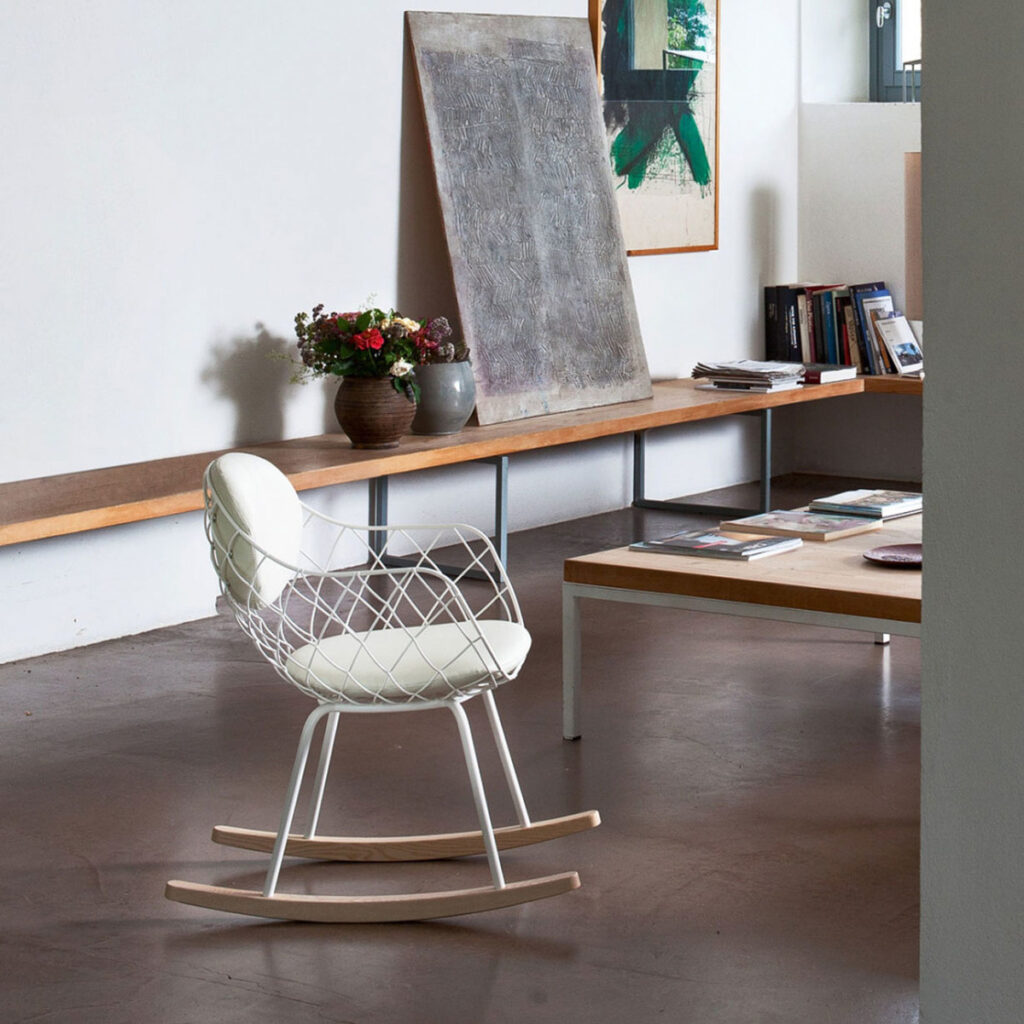
Martha by Roberto Lazzeroni for Poltrona Frau
What characterizes this rocking armchair is the shell that results from the assembly of two elements: the main one is the single piece that includes the seat and armrests on which the backrest seems to float – but is interlocking. The base is in solid ash and the seat is slightly inclined on the back for a further invitation to relax.

Move by Rossella Pugliatti for Giorgetti
Move embodies the most sophisticated and elegant version of the rocking armchair: the solid ash wood structure enhances the skillful woodworking that is expressed in a play of curvatures that enchant and give visual depth to the whole. Seat and backrest are made comfortable by generous cushions.
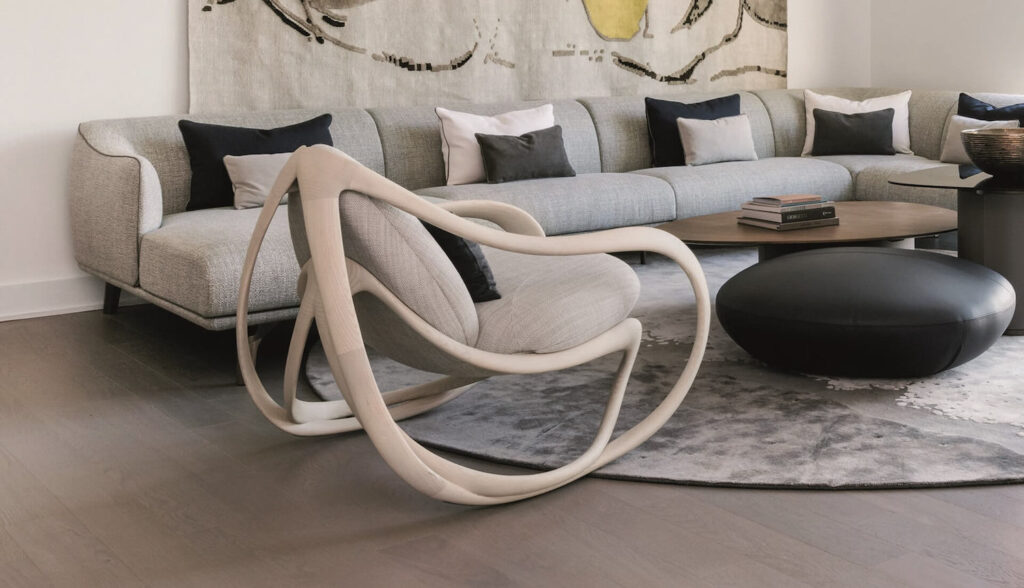
Nepal by Paola Navone for Baxter
We find Paola Navone again with this eclectic and very fun interpretation of the rocking chair theme. The structure of Nepal is extremely simple: the base is in metal while the seat and backrest are wooden hone. But what makes its presence captivating and disruptive is certainly the upholstery in Mongolia.
